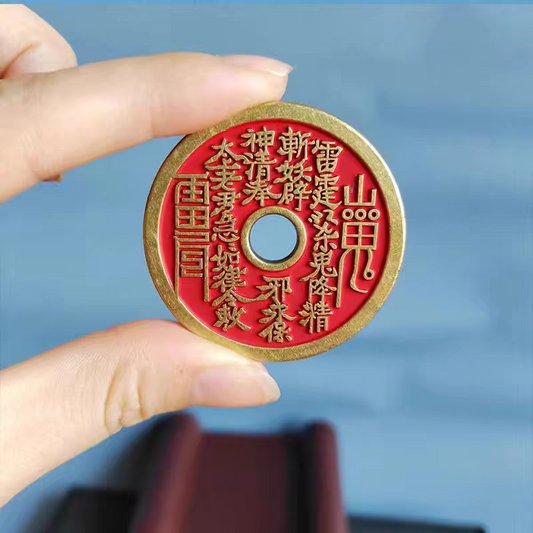
General Overview Of The Great Encyclopedia of Taoism
paulpengAktie
General Overview
Taoism 道教

Rooted in ancient Chinese culture, is a religion centered on the worship of the Dao and its manifestations as divine beings. Originating in China, it is one of the country's major historical religions and remains a legally recognized faith today. With the Dao as its banner and Laozi, the founder of Daoist philosophy, as its patriarch, Taoism is also referred to as "the teachings of Lao" or "the mysterious way" due to Laozi's emphasis on "the mysteriously profound." The religion views the Dao as the fundamental law governing the universe and the true origin of all existence. Through cultivation, individuals can attain the Dao, becoming immortals who transcend life and death.
Taoism did not emerge from a single founder but evolved over time, absorbing teachings from various pre-Qin schools of thought, including Daoism, Mohism, immortality cults, and Yin-Yang philosophy. By the Han Dynasty, organized sects such as the Taiping Dao and Zhengyi Dao began to take shape. Over the centuries, numerous sects emerged, including the Lingbao, Shangqing, and Quanzhen schools. The religion practices polytheistic worship, centering on deities like the Three Pure Ones and the Jade Emperor, while also incorporating local folk deities. Taoism emphasizes the sanctity of life and the pursuit of longevity and immortality, viewing life as the unity of form and spirit. It advocates living in harmony with nature, non-action in governance, and returning to one's authentic nature in personal cultivation. These principles have contributed significantly to Chinese philosophy, science, and culture.
Daoism 道家 (Taoism)

An alternative name for Taoism. Originally one of the Hundred Schools of Thought during the pre-Qin period, Daoism was founded by Laozi. While some scholars regard it as a purely philosophical and political doctrine, religious Taoism integrates the worship of immortals with faith in the Dao, tracing its lineage to Laozi as its supreme teacher. In religious contexts, Laozi is revered as an eternal immortal and the personification of the Dao. Historically, Daoist thought evolved through movements like Huang-Lao learning in the Han Dynasty and Xuanxue (mystical philosophy) in the Wei and Jin periods. After the Jin Dynasty, independent organizational traditions of Daoism largely disappeared, with religious Taoism becoming the primary vehicle for preserving Daoist thought and texts. The term "Daoism" is also used to classify pre-Qin Daoist classics and religious texts, such as those found in the "Daoist" section of the Siku Quanshu.
Dao Men 道门 (The Way Gate)

An alternative name for Taoism. First recorded in Yuan Dynasty texts like Huitu Baojian, where it refers to the veneration of Daoist deities. The term also appears in Ming Dynasty poetry, symbolizing the tranquility of Daoist practice.
Xuan Men 玄门 (The Mysterious Gate)

A self-designation used by Taoists to distinguish their tradition from other religions and cultural systems. Derived from the opening lines of the Tao Te Ching—"the mysteriously profound, the gateway to all wonders"—it emphasizes the mysterious and profound nature of the Dao. The term appears in official documents, such as the Hanshi Shijia, where it describes leading figures in the tradition.
Xuan Jiao 玄教 (The Mysterious Teaching)

Another name for Taoism, inspired by the Tao Te Ching's description of the Dao as "mysteriously profound, the gateway to all wonders." The term highlights the religion's focus on the profound mysteries of existence.
Lao Shi 老氏 (The Teachings of Lao)

A term used by those outside the tradition to refer to Taoism. Originally denoting the teachings of Laozi, it became synonymous with religious Taoism, which traces its origins to Laozi's philosophy. In ancient China, Buddhism, Taoism, and Confucianism were associated with the teachings of Sakyamuni, Laozi, and Confucius, respectively, forming the "three teachings of the sages." Historically, Taoism and Buddhism were collectively referred to as the "two teachings" in contrast to Confucianism, with dedicated sections in historical texts like the Shi Lao Zhi in the Wei Shu and Sui Shu.









